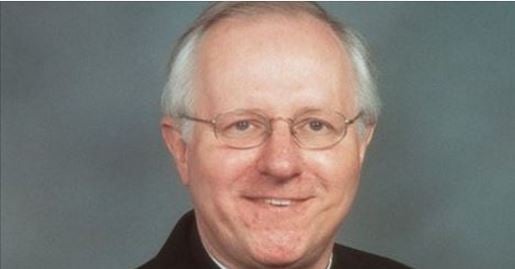
‘Capital Punishment Must End.’ That’s the bold headline in the National Catholic Register this morning. The Register, in a groundbreaking collaboration with three other Catholic journals, published a strong statement opposing capital punishment.
The editorial boards of the Register, the National Catholic Reporter, Our Sunday Visitor and America joined in opposition to the death penalty, as the Supreme Court prepares to hear arguments in Glossip v. Gross, a case out of Oklahoma that challenges the most widely used lethal injection protocol as being cruel and unusual punishment.
The editorial quotes Miami Archbishop Thomas Wenski, chairman of the U.S. bishops’ Committee on Domestic Justice and Human Development, who said,
“… the use of the death penalty devalues human life and diminishes respect for human dignity. We bishops continue to say, we cannot teach killing is wrong by killing.”
Philadelphia Archbishop Charles Chaput said:
“Turning away from capital punishment does not diminish our support for the families of murder victims. … But killing the guilty does not honor the dead nor does it ennoble the living. When we take a guilty person’s life we only add to the violence in an already violent culture and we demean our own dignity in the process.”
The joint statement by the four Catholic publications reads:
We, the editors of four Catholic journals — America, National Catholic Register, National Catholic Reporter and Our Sunday Visitor — urge the readers of our diverse publications and the whole U.S. Catholic community and all people of faith to stand with us and say, “Capital punishment must end.”
* * * * *
As Catholics and other concerned citizens turn their attention to the issue of capital punishment this morning, I bring back a report I first published a few years ago on the Last Meals Project, an initiative to study death row prisoners’ last menu choices.
LAST MEAL, LAST CHANCE: CONVICTED KILLER CHOOSES CHRIST
On September 21, 2011, Troy Davis died in Georgia. Davis, you may know, was convicted of murdering a police officer. But in the twenty years since the crime, seven of the nine key witnesses have recanted their testimony. The lack of clarity regarding the case sparked anti-death penalty backlash. Groups including Amnesty International and the NAACP petitioned the courts to grant Davis a new trial or evidentiary hearing. World leaders including Pope Benedict XVI, Archbishop Desmond Tutu, Renate Wohlwend of the Council of Europe’s Parliamentary Assembly, and former President Jimmy Carter called for a review of the case. Nonetheless, the Supreme Court refused to consider a last-minute appeal;
Davis, denied the opportunity to take a lie detector test, was executed on September 21, 2011, at 11:08 p.m. But Davis was not the only man to be executed on that date in the United States. Lawrence Russell Brewer died as well, although his conviction was not controversial: Brewer had been found guilty of a hate crime in Jasper, Texas, for the 1998 dragging death of James Byrd Jr.
Following these two prominent executions, many are talking about capital punishment, about whether it’s moral to take a life even when there is no ambiguity regarding the person’s guilt. The Catholic Church opposes the use of the death penalty in almost every case, and Pope John Paul II spoke about it frequently.
But it’s not my purpose today to talk about the death penalty. My purpose today is to talk about food—specifically, about the convict’s last meal.
The Last Meal Project
CBS’ “48 Hours” offered an unusual slide presentation, showing part of The Last Meals Project, photographer Jonathon Kambouris’ pictorial review of criminals’ dying requests. In The Last Meals Project, Kambouris intersperses photos of the infamous killers and their last meals with statistics regarding the incidence of executions in the United States.
Lawrence Russell Brewer, convicted more than a decade ago for the “dragging death” murder, used his final meal to give the finger one last time to the criminal justice system and the taxpayers of Texas. Brewer asked for a large and very expensive dinner: two chicken fried steaks, a triple-meat bacon cheeseburger, fried okra, a pound of barbecue, three fajitas, a meat lover’s pizza, a pint of ice cream and a slab of peanut butter fudge with crushed peanuts. Then, according to prison officials, Brewer didn’t eat any of it. The story prompted Senator John Whitmire, chairman of Texas’ Senate Criminal Justice Committee, to call for an end to the longstanding tradition of permitting convicts to choose their final meal. Brad Livingston, executive director of the Texas Department of Criminal Justice, agreed; and within hours, the practice was ended. In the future, criminals on death row will have to settle for the same prison food that the others receive.
The Last Meals Project showcases some other prominent killers and the meals they chose:
- Timothy McVeigh, convicted of the Oklahoma City bombing, asked for two quarts of mint chocolate chip ice cream before his execution in Indiana in 2001.
- Mass murderer Ted Bundy asked for steak, eggs, hash browns and coffee before heading off to the electric chair in 1989.
- Karla Faye Tucker requested a garden salad with ranch dressing, a peach and a banana.
- Prostitute Aileen Carol Wuorlos was executed in 2002 for killing seven men in Florida. She didn’t want a meal before she died—but she did ask for and receive one cup of coffee.
- The founder of the Crips, a Los Angeles street gang, Stanley “Tookie” Williams was convicted of killing four persons in California. Williams declared his innocence until the end. Perhaps as a sign of his pacifist streak, he asked for a last meal of oatmeal and milk.
- Victor Feguer was hanged in Iowa in 1963, but not before eating his last meal of a single, unpitted olive. When Feguer was buried, the pit from the olive was still in his suit pocket.
- And here’s the guy who most caught my attention: Jonathan Wayne Nobles, on death row for the stabbing deaths of two young women, was an ex-con with a history of drug abuse and mental illness. His request: All he wanted, before his death by lethal injection, was to receive the Holy Eucharist.
Nobles’ heart was apparently turned toward repentance just three weeks before his execution when he met with Paula Kurland, the mother of one of his victims. Nobles had first refused to meet with her; but Kurland hoped that a face-to-face meeting with her daughter Mitzi’s killer would help her to put the past behind her. With the help of a state program called the Victim/Offender Mediation Dialogue, the meeting was arranged.
Murderer Jonathon Nobles and grieving mother Paula Kurland talked, first uncomfortably, about that day, about Paula’s grief, about Jonathon’s regret. Apologies were offered and accepted. They talked for five hours. In the end, Paula Kurland reported feeling more at peace than she had been in the previous twelve years. And Jonathon, forgiven by his victim’s mother, was ready to accept the forgiveness of God.
He died as we all might hope to die—having just received the Body and Blood of Christ.















